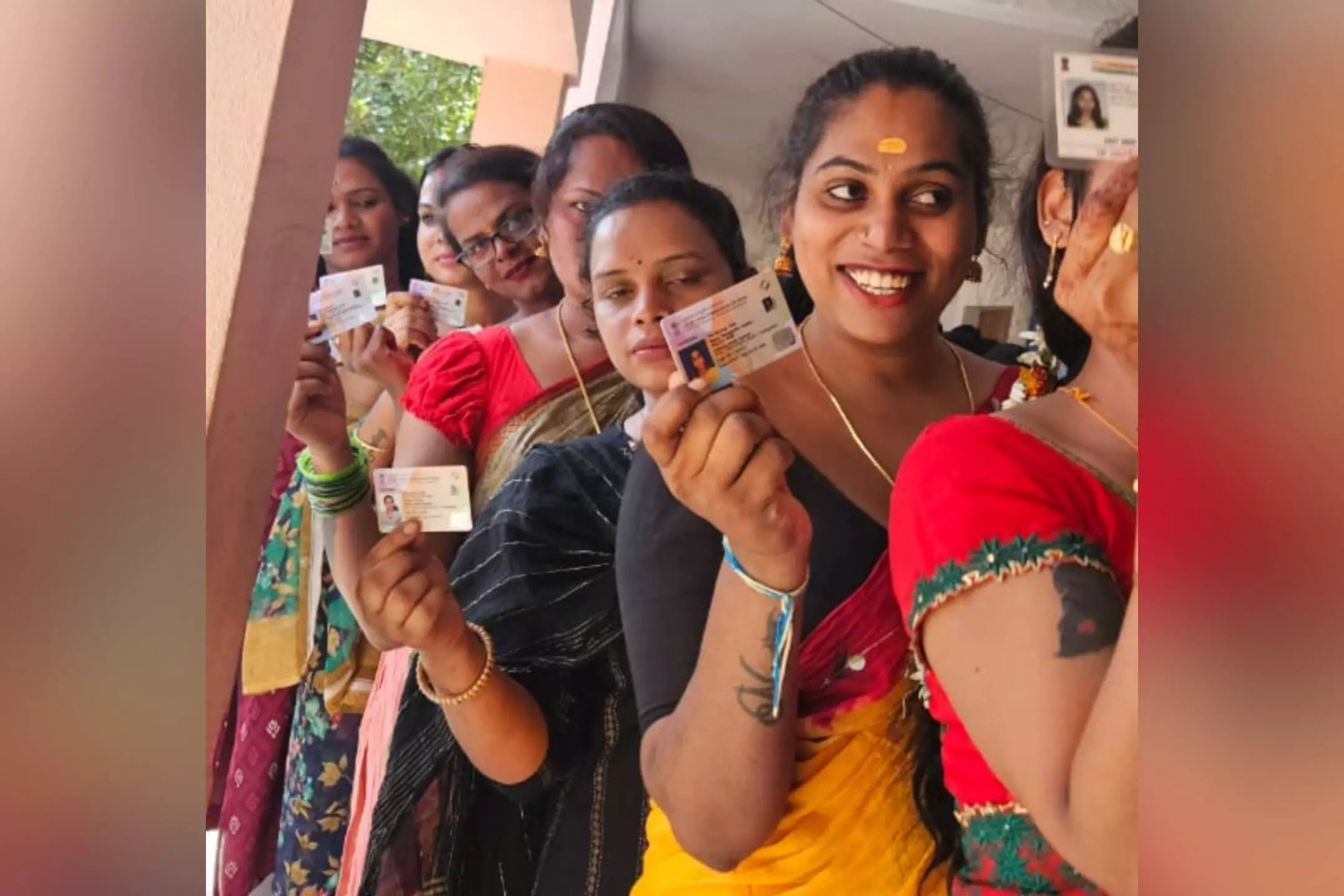Rural areas vote more than urban voters; Is it a glitch or cosmopolitan apathy?
After the election schedule was announced on October 9, several non-government organisations in Hyderabad came forward to educate people on the need to vote.
By Kaniza Garari
Hyderabad: Are urban voters refraining from voting or is it a technical error in preparing electoral rolls that is always showing a lesser number?
The question has been raised by many as the rural belts of Telangana recorded the highest voting percentages and the urban areas, within the Greater Hyderabad Municipal Corporation limits, showed low voting percentages.
In rural areas, Jangaon saw a voters’ turnout of 83.34 per cent, Narsampet (83 per cent), Dubbak (82.75 per cent), Nakrekal (82.34 per cent), Medak (81.72 per cent), Palakurthi (81.23 per cent) and Bhongir (81.04 per cent).
On the other hand, the urban areas showed low voters’ turnout such as Yakutpura (27.87 per cent) Nampally (32.40 per cent), Charminar (34.02 per cent), Malakpet (36.90 per cent), Bahadurpura (39.11 per cent) and Chandrayangutta (39 per cent). Do these numbers truly reflect different voting trends among rural and urban voters or are there any other issues being overlooked?
Urban voters
Are urban voters not willing to vote? “No, they are voting but there are dual votes and the old ones are not erased,” says political analyst PR Raghavendra Reddy.
“I would like to give an example. In Hyderabad, a friend has 12 votes registered in their home. Among the 12, only five people are present now and the rest, being tenants, have moved out. Despite telling the GHMC officers that they are no longer living here, their names are still on the voters’ list and 12 slips were issued. This is a technical error and they have failed to rectify it despite bringing it to their notice.”
After the election schedule was announced on October 9, several non-government organisations in Hyderabad came forward to educate people on the need to vote. “All those whom we connected during our various programmes have voted. We expected the percentage to show an increase of five per cent at least but that has not happened,” says Sheela Panicker of Lets Vote.
This confusion in compiling voters incorrectly has led to the conclusion that urban voters are not interested and are not voting. Raghavendra says, “This is a myth which has been created and it is only being amplified. Urban voters are voting but the additional and dual names are not cleared. If the election commission takes a serious note and carries out an exercise there will be maximum deletion in urban areas.”
Why no errors in rural belts?
The rural population is small in size and the sarpanch system is more effective than municipal corporations. The names are added on time and also deleted on time. “Those who come to work in Hyderabad take a holiday and go to their villages to vote. Why? It is important for the family. Sarpanch will not listen to them even if one vote from the family is missing,” explained Kiran Vissa of the Telangana People’s Joint Action Committee.
A senior official in the municipal corporation explained, “Checking votes is a once-in-a-five-year exercise and going door to door in urban areas is quite a task. Also, since election work is looked upon as additional work for the administration that happens once every five years, data management is not given priority.”
Due to these reasons, dual votes, people who are missing or not present in the country and even the dead remain in records forever till a candidate does ground surveys and gets them removed. This is quite a task and involves not only physical labour but also can be quite an expensive affair.
Then there is the perception of the political parties. Does the difference in voting percentages give an impression to the parties that rural areas are more active than urban areas?